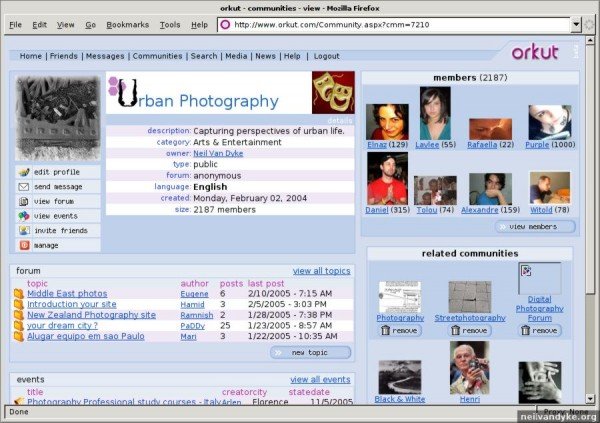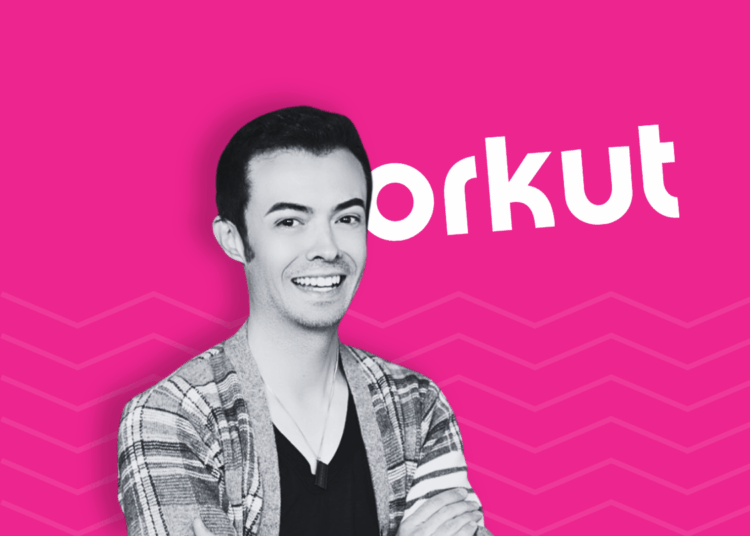Don’t ever be in a wrong notion to think that for people their first social networking site was Facebook. It was mostly Orkut for the 80s kids and mostly 90s and was a huge hit with 300 million users. The creator was a Turkish Engineer named Orkut Büyükkökten who achieved the feat with just a team of 30 engineers and designers. For the engineer it was not his first social networking site that he built, it was the third one.

Google founded and launched Orkut in January 2004, a month before Facebook was launched. Then what must have gone wrong for its downfall and the fact that it was taken down after 10 years? According to reports with the incoming of the popularity of Facebook and Twitter especially in 2011 where Facebook had an unimaginable rise of 192% users which pinned the last nail in Orkut’s coffin were in past two years, it just added 2 million new users.
Many of you must have got an Orkut account but how many of you do know about its Founder Orkut Büyükkökten? Today we unleash for you the man who made social networking site a trend long before Mark Zuckerburg came in the business.
The Early Story
He was a Turkish boy with a German accent as he spent his childhood in Germany. But the striking thing is he was a master in coding while he was in the fourth standard. Well, he suffered bullying in his younger days and later found out that it was due to his good grades! What a cruel world!
Orkut went to Bilkent University in Ankara to pursue computer science. He then applied for higher studies and skipped MIT thinking it was a serious place to be in. He also didn’t want to apply to Stanford University as the form fee was too high. Seriously? Thanks to his father who insisted him to apply at Stanford and there was Orkut who chose Stanford because of California’s weather.

The Journey Begins
Orkut’s thesis at Stanford was on efficient web browsing on handheld devices. He said:
When you have a tiny screen with low resolution, you want to summarise the content on a web page and then process it before sending a different version or view of the page to the handheld device.

He experimented a lot with the website and stuff and the proxy servers. His method was faster and so he named it ‘Power Browser’. While there Orkut met Larry Page and Sergey Brin when Google was still google.stanford.edu.
Into Social Networking
Orkut was more interested to have a chat with undergraduate students in Stanford. The reason why he launched a Social Networking Site in the fall only for the college students named, Club Nexus. After he launched it in a party, it became instant it as students rushed to log in and also share their e-mails. This later bought both the graduates and undergraduates under one platform.
Orkut worked on inCircle which was an alumni social network for the Stanford Alumni Association. He wrote the entire code base of Club Nexus and inCircle. The code was written in C#, the database was in Microsoft SQL server, and it was using ASPX pages.
Job Offers
Orkut was always a man who loved connecting people around and always tried to help them out. Since in his final year, he was too busy with Club Nexus his classmates and many thought he might have got a thesis on social networking. But as job offers started pouring in it was just the battle between Google and Microsoft!
But it wasn’t tough for Orkut to choose! He always believed in being comfortable and followed his passions so he chose Google as he knew the founders and fascinated by its works. He indeed wanted to work in a cool startup!
He said:
People and technology are two of my passions. I dedicated almost my whole career connecting people through technology.
In 2002 he joined Google as Frontend Engineer. 20 percent project is a concept where you devote 20 percent of your time to something you love given that it aligns with Google’s core mission. He was a part of it created a social network named Eden.
“We did a dog food (tech slang for working out the glitches) with Google employees and they really liked it. We couldn’t get the domain eden.com. I then had a meeting with Eric Schmidt and Marissa Mayer.” he quoted.
That was when it all started when they suggested it to name as Orkut.com as he was the one who did it on his own and also a domain was available.
Orkut.com
He was at first the one man power. He set up the databases, wrote all the code base, and even went to data centers to set up the computers. It was after its popularity that Google decided to help with the resources. Orkut said his main aim to build such a network was for fun and connecting people. So profiles were made keeping in mind three types of users namely, Generic profile, Professional profile, Dating profile.
He said:
With orkut.com we realized that it was hard to scale using Microsoft technologies and tools, so we rewrote entire orkut.com using Google’s in-house tools. We switched from C# and Windows to Unix based machines that use C++ and Java. We switched to My SQL. That process took an entire year as it was extremely difficult to migrate from one set of technologies to other with an active large user base.

That time many people left the Orkut.com but it was trying to grow.
The Growth
According to Orkut, growth is pretty simple and not a rocket science formula. He recalled an event.
My friend from New York met a girl online from Estonia and they started talking to each other on orkut.com. This was followed by calls and he visited her in Estonia later. Eventually, she moved to New York and they got married. They have a son now.
He thought that must be the reason for their popularity in Estonia! Within few years it had as many as search pages at Google.
In 2008, Orkut left Orkut.com to become a product manager at Google. He joined the consumer team at Google and worked with Marissa Mayer for many years before she moved to Yahoo. He worked on Google images (UI and search), Google one bar (shifting from side to the integrated experience of one bar on the top), and Google videos.
Orkut felt that when Orkut.com was launched there were not many social networking sights so people concentrated on one and was happy to browse on their desktop or laptops but with incoming of mobile devices and a plethora of new social networking sites now, people jumble up a lot.
“If you look at social networks today, there’s so much social ambiguity when you talk to people. Messaging has become our primary way to communicate. People now use WhatsApp, Facebook messenger, or text messages to communicate. We have almost stopped talking to each other on phone. A lot of this is happening because of our insecurities. We spend so much time online—watching Netflix, playing video games or not being around people, that we have almost forgotten how to communicate. You see that when you try to speak to people face to face. Or when you go to a train station or a coffee shop and see people on their phones and not talking to each other. That’s creating a society which is insecure, unhappy, and disconnected.”
In June 2014 it was finally taken down and the reason being given by its engineering director Paulo Golgher is
“Over the past decade, YouTube, Blogger, and Google+ have taken off, with communities springing up in every corner of the world. Because the growth of these communities has outpaced Orkut’s growth, we’ve decided to bid Orkut farewell (or tchau). We’ll be focusing our energy and resources on making these other social platforms as amazing as possible for everyone who uses it.”

Do you still miss Orkut?
Also Read: Popular Startups That Were Founded In 2000s & Where They Are Today
















